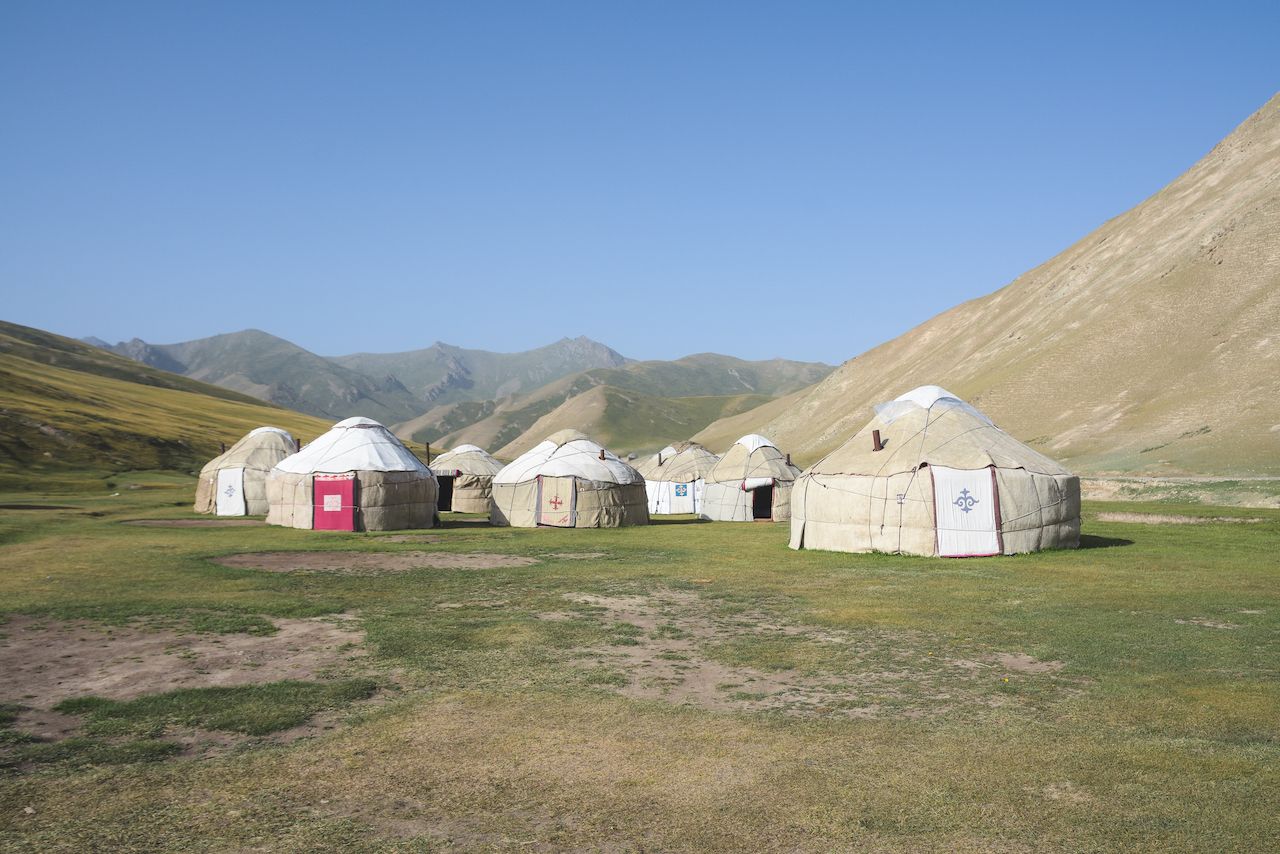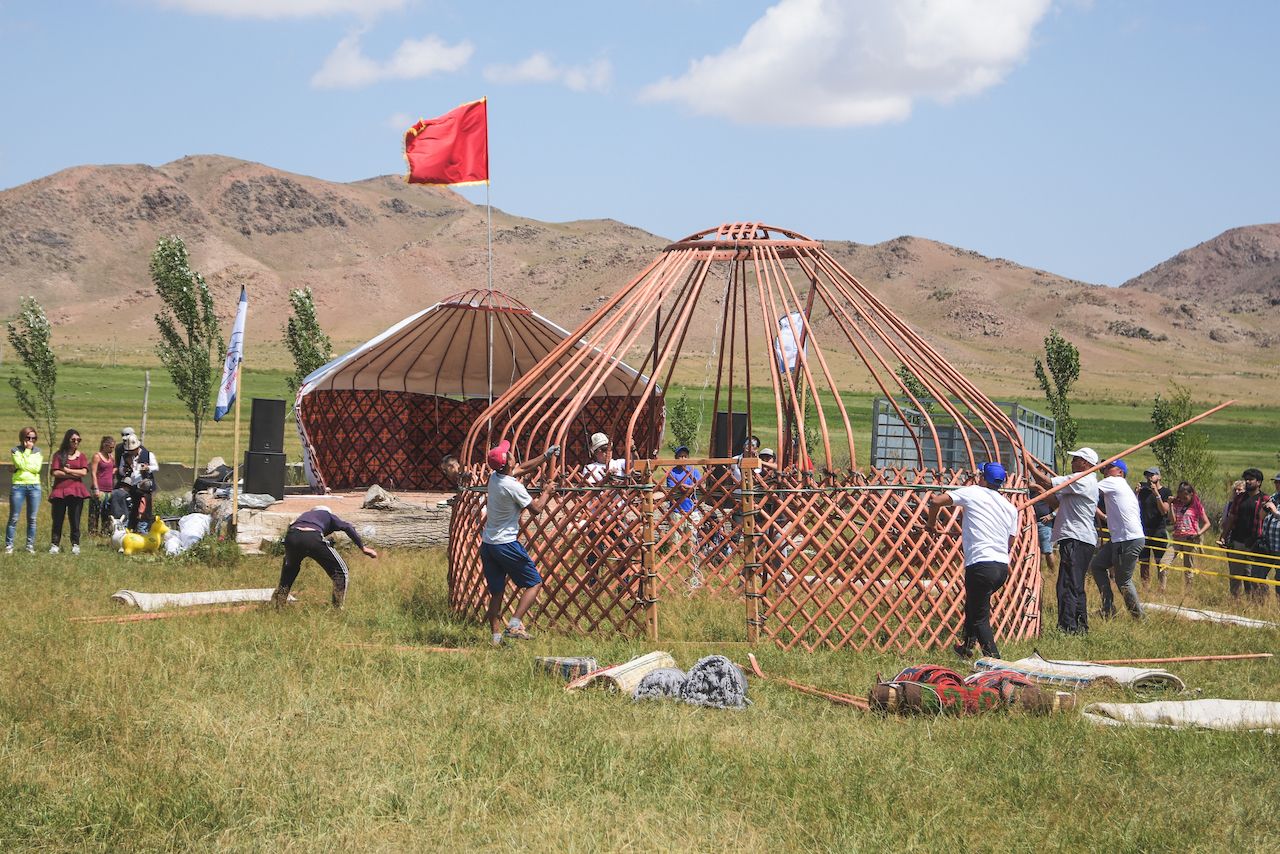Known as yurts in the Stans and gers in Mongolia, the movable homes of Central Asian nomads are becoming a more and more popular form of accommodation for both backpackers traveling along the ancient Silk Road routes and tourists looking for alternative forms of accommodation in Western countries. Thanks to the success of community-based tourism programs in Kyrgyzstan and the loosening of visa regulations in once hard-to-access countries like Uzbekistan or Tajikistan, reaching remote camps to experience a lifestyle that has characterized this corner of the world for millennia is now easier than ever.
Portable and easy to assemble, traditional yurts are built of felt and waterproof skins covering a structure made of bent wooden poles. While simple in appearance, these circular tents offer great protection from the fierce climate of the steppe, shielding against the heavy winds that blow unhindered in the barren flats and offering enough insulation to resist extreme temperatures.





